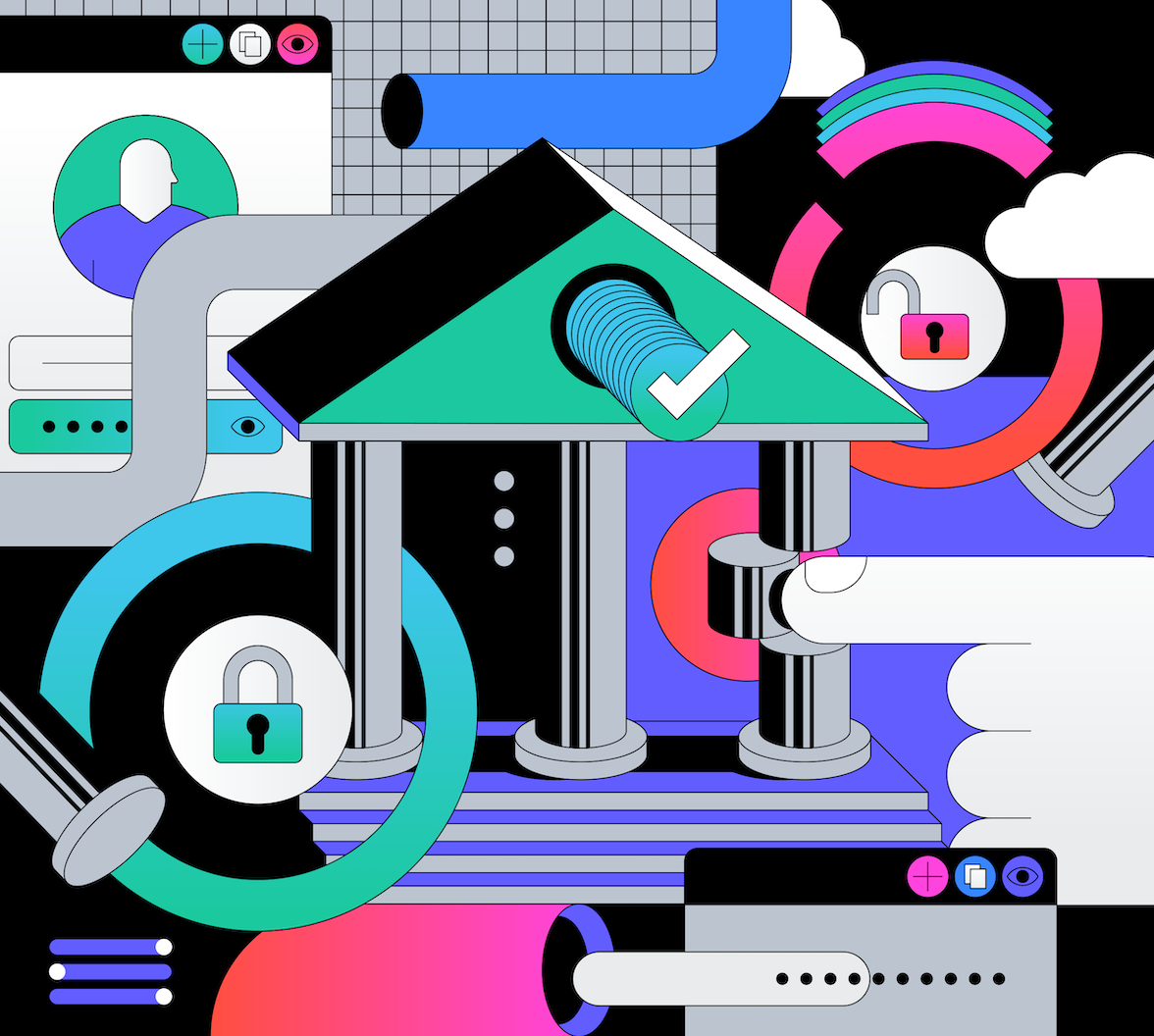What does it mean to build digital services that citizens both use and trust? From the local to the national, generating effective digital transformation and getting citizens onboard with digital public services has been a challenge. The promise of digital government has often been muddled by institutional inertia and perceptions of government as slow-moving and bureaucratic. At the same time, positive initiatives, such as the Tallinn Declaration on eGovernment, which embrace objectives as wide-ranging as improved service delivery, greater efficiency, increased transparency, interoperability, and citizen satisfaction, have begun to remove entrenched ambivalence about e-government. Modern GovTech is where these barriers collide, creating the opportunity to address newly accelerated consumer demand in the face of private-sector conveniences and the consequences of the Covid-19 pandemic.
GovTech, according to public sector entities such as the World Bank, is a technology-based “government approach to public sector modernization.” The same definition emphasizes three core areas for modernization: universal accessibility, citizen-centric services, the delivery of efficient and transparent government systems, and finally, digital transformation, all of which rely on overcoming long-cited barriers to adoption and success, such as citizens’ willingness to use and trust services.
GovTechs, an umbrella term for technology-based solutions (and the companies behind them) that power the technical aspects of digital transformation, can be a bridge between use and trust and learning to see citizens as customers.
Changing User Expectations
In a pure consumer context, choice and convenience rule: you can easily go online and search, comparison shop, and buy a desired product in a few clicks without thinking about any of the complexity of the transaction. Consumers naturally transfer their positive consumer expectations to all of their digital experiences, according to McKinsey, raising the bar for government entities.
But how many consumers have enjoyed the convenience of one-click (or similarly easy) citizen services, such as reviewing and paying utility bills, filing income taxes, or having a streamlined, one-stop car-and-driver licensing experience? Or, for example, registering for unemployment benefits digitally, making the physical queue at the unemployment office shorter and more efficient for those going through the process in person?
Rapid change has led to the expectation that public sector services offer private-sector-rivaling availability, choice, and convenience, which overrides previous consumer doubts about public sector readiness.
Driving GovTech strategy in complex public sector environments demands a delicate balance between overarching strategic questions and the nitty-gritty of implementation. For example, this balance could be examining the underpinnings of transformation strategically, such as public expectations, financial considerations, accessibility, demographics, and sustainability, against the competing operational demands of introducing new technology into hierarchical, political, and often change-resistant environments. Practically, such implementations involve extensive political and stakeholder management and support, consideration of legacy investments and programs, and a well-defined plan for rolling out proposed changes and the downstream effects these may have, whether positive or negative.
Ultimately, the strategy for selecting and implementing GovTech solutions and providers rests with public sector employees who are responsible for the strategic and tactical approaches described and for meeting consumers’ increasingly private-sector-style expectations. This is redefining how governments interact with citizens.
Three core considerations highlight how uniquely demanding delivering on these expectations can be for government agencies:
1. Deliver on citizens’ demands and expectations.
Government digital transformation is different from its private-sector counterpart. Historically,how consumers perceive and use public and private sector services has differed. However, societal changes stemming from the Covid-19 pandemic and the attendant shift to living life almost 100% online have resulted in heightened citizen expectations for public services to be available digitally in the same way as online shopping and food delivery. As a result, old barriers against citizens' willingness and ability to use e-gov services have declined significantly.
2. Balance privacy and user experience.
More fundamentally, the private sector is driven by consumer demand and choice, incentivized by increasing profit and reducing cost. While the public sector shares these concerns, because citizens often do not have a choice in deciding whether to interact with the government, the government’s primary aim is to provide services to citizens efficiently while building trust, safeguarding citizens’ data privacy, and ensuring compliance with regulations, mandates, and standards to which government agencies are tied. Trust remains an important issue for consumer-citizens, who perceive a level of risk in exposing their private data to public entities in ways they don’t when dealing with private entities. For public sector agencies, privacy concerns have historically taken precedence over user experience, but they need to prioritize privacy and security over user experience and convenience is beginning to change as GovTechs offer secure solutions leveraging modern infrastructure and economies of scale that facilitate both outcomes at a lower overall cost.
3. Make public services accessible to all citizens.
The rapid digitization of society champions convenience above all, but digital-only approaches can create accessibility blindspots and exacerbate the digital divide. Government agencies must serve all citizens, which means designing for everyone or else disenfranchise citizens who do not have access to digital services, devices, or connectivity.
How Can GovTech Enable These Citizen Experiences?
Government agencies want to deliver on these citizen expectations because the agency benefits by achieving its mission, improving efficiency, and reaching all of its citizens — ultimately benefiting citizens.
“A valuable function of government is providing all constituents with equal opportunity to access different services. By enhancing government with modern technologies, citizens are presented with multiple paths to the same services. These paths can now be both digital and in-person avenues, allowing the government to be more efficient in providing the right access to the right group of people,” Auth0’s Jeet Shah, Identity Architect, and Senior Solutions Engineer explains. “GovTechs introduce options for how citizens are served, allowing governments to dedicate resources more effectively. Citizens who prefer interacting with their governments online allow in-person services to be more accessible and can ultimately improve the quality. GovTech vendors and what they provide to governments ultimately leads to better services for all constituents.”
GovTech grows from two branches: the first is the services governments offer to their citizens, the second is the vendors that enable those services. Governments furnish services in line with citizen expectations, which brings together these two branches.
Government services to citizens: Focus on usability and trust
At the heart of delivering efficient public services is the ability to unify disparate, siloed departments and functions under a single sign-in. Forcing citizens to keep track of and maintain access to multiple portals and sites creates friction and disincentivizes use while also introducing the greater potential for security vulnerabilities and data privacy breaches.
At the same time, maintaining this fractured setup is less efficient, potentially open to fraud, and forfeits opportunities for fostering citizen trust and personalizing user experiences. For example, imagine being able to offer all citizen services through a centralized digital portal or app with a single sign-on experience. From license renewal to viewing existing permits to paying bills, governments can leverage GovTech that enable these features and gather user analytics simultaneously to feedback into personalization efforts and a deeper understanding of citizen needs and wants.
Identity Jumpstarts GovTech Services
Various barriers have slowed technology-driven public sector transformation over the past two decades. Many of these barriers, such as embedded organizational and cultural issues, existing processes, and legacy structures and infrastructure, persist regardless of technology. The impetus to accelerate the pace of change, however, has positioned GovTech to play a key role in helping to overcome some of these barriers.
Identity enables all levels of government to bring their services to more citizens via the channels they prefer and already have access to. If the barrier faced is the difficulty of use, unified identity simplifies usability for both the government agency and the citizen user. If the barrier is trust, secure and transparent identity technologies can breakthrough.
Vendor service enablers: Auth0 for unifying identity
Auth0 is a GovTech vendor that, in this case, acts as an umbrella, freeing government agencies from service and platform fragmentation by bringing them together under a single, flexible sign-on solution. By reducing infrastructural complexity and providing options government agencies can use to offer services across multiple vectors, Auth0 helps public sector entities to expand the base of citizens who can access their services.
By doing the heavy lifting of the platform and digital identity consolidation, Auth0 enables governments to reorganize and reprioritize resource allocation for more efficient processes – dedicating resources to digitizing what is possible and improving those that cannot be digitized.
If you’d like to learn more about how identity can accelerate digital change and invite citizens along for the journey, please get in touch with the team at Auth0.





